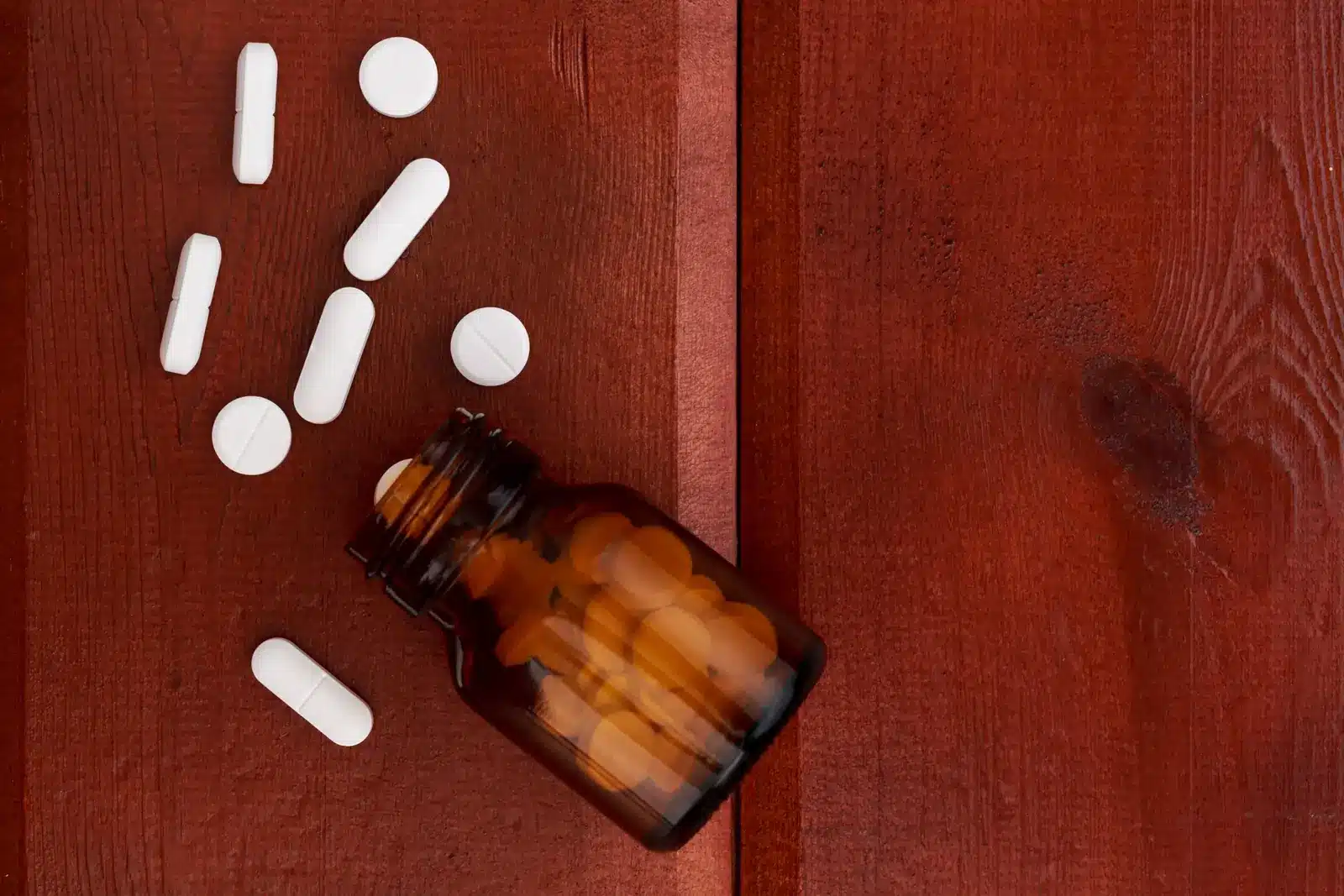
Table of Contents
Key Points
- Tramadol is a synthetic opioid approved by the U.S. Food and Drug Administration to treat chronic pain, including moderate to severe pain.
- Though tramadol is not considered as strong as other opioid painkillers, substance abuse and addiction are still risks.
- Signs of tramadol addiction include spending an excessive amount of time using or recovering from tramadol, hazardous tramadol use, and unsuccessful attempts to cut back on your dose.
- To avoid uncomfortable side effects of Tramadol, it’s best to contact a healthcare provider for advice on tapering.
- Mild tramadol withdrawal symptoms can be managed with rest and hydration.
- A strong support system and relaxation techniques may make tramadol withdrawal more comfortable.
- Severe tramadol withdrawal symptoms, such as hallucinations and paranoia, may require medical care.
- Resuming use of opioid drugs after a period of abstinence can increase the risk of overdose.
Tramadol Withdrawal Symptoms
Tramadol withdrawal symptoms can occur when someone develops a physical dependence on tramadol. Abruptly stopping this medication can lead to uncomfortable and even severe withdrawal effects. Some of these symptoms may include nausea, vomiting, dilated pupils, chills, anxiety, and diarrhea. [1] More severe withdrawal effects might include hallucinations, paranoia, and panic attacks. Medical detox can help you stop taking tramadol in a way that’s safer and more comfortable.
What Is Tramadol?
Tramadol is a member of a class of medications known as opioid agonists. [2] It’s FDA-approved to treat moderate to severe pain in adults. Brand names include ConZip, Ultram, and Qdolo. Tramadol is available in both immediate-release and extended-release formulations and is often prescribed to patients recovering from surgery.
As a synthetic opioid drug, tramadol has been linked to a risk of substance abuse and addiction. The U.S. Drug Enforcement Administration (DEA) classifies tramadol as a Schedule 4 controlled substance. [3] While it isn’t as potent as prescription opioids such as morphine, oxycodone, or hydrocodone, it still carries a significant risk of dependence.
Even though tramadol is milder than other opioid painkillers, it’s still possible to develop an addiction. A tramadol addiction may require professional substance use treatment from a medical professional or treatment program. If you have a family history of substance abuse or other addiction risk factors, tell your doctor before accepting a tramadol prescription. There may be alternative medications that don’t pose the same risk of addiction.
Signs of Tramadol Addiction
Tramadol is an opioid drug that poses a risk of abuse, dependency, and addiction. Addiction to this substance is classified as an opioid use disorder (OUD). If you or a loved one is taking tramadol, it’s important to recognize the signs and symptoms of OUD, including: [4]
- Intense cravings for tramadol
- Difficulty controlling how much tramadol you take or for how long
- Using opioids in hazardous situations
- Unsuccessful attempts to quit or cut back
- Trouble fulfilling responsibilities due to tramadol use
- Continued use despite relationship problems or worsening health
- Spending excessive time obtaining, using, or recovering from tramadol
- Dropping other activities due to tramadol use
- Needing higher doses for the same effect
- Experiencing withdrawal symptoms when abstaining from use
According to the American Psychiatric Association’s Diagnostic and Statistical Manual of Mental Disorders, Fifth Edition (DSM-5), two or more of these symptoms may indicate an opioid use disorder requiring professional treatment. The more symptoms present, the more severe and difficult to treat the disorder becomes.
Symptoms of Tramadol Withdrawal
Withdrawal symptoms associated with tramadol use are a hallmark sign of physical dependence. If you or a loved one is taking tramadol, be aware of these opioid withdrawal effects: [5]
- Intense cravings for opioids
- Increased heart rate
- High blood pressure
- Excessive sweating
- Nausea and vomiting
- Muscle aches, chills, or fever
- Dilated pupils
- Trouble sleeping
- Anxiety and crying
- Diarrhea
More Serious Withdrawal Symptoms
In rare cases, more serious tramadol withdrawal symptoms can occur, such as: [6]
- Severe anxiety
- Panic attacks
- Paranoia
- Hallucinations
- Confusion
- Numbness or tingling in hands or feet
Managing Tramadol Withdrawal
Mild tramadol withdrawal symptoms can be managed at home with medical supervision. Here are some tips for easing the symptoms of withdrawal: [7]
- Get plenty of rest
- Practice relaxation techniques such as meditation
- Learn about tramadol withdrawal to reduce anxiety
- Lean on supportive family and friends
- Drink 2–3 liters of water daily
If symptoms worsen, seek professional care. A doctor may prescribe medications such as methadone, buprenorphine, or clonidine to help manage moderate to severe opioid withdrawal symptoms.
Avoiding Opioid Withdrawal Syndrome
If you’re taking tramadol and want to stop, avoid going cold turkey. Call your healthcare provider to discuss a tapering plan that reduces your dose gradually, minimizing the risk of withdrawal during detoxification.
What’s the Best Opioid Withdrawal Timeline?
There’s no single best withdrawal timeline for tramadol. Your doctor will consider your overall health, mental health, treatment purpose, dosage, and how long you’ve been using tramadol before developing a personalized tapering plan.
Once prescribed a tapering regimen, follow it precisely. Taking more tramadol after tapering can increase the risk of a life-threatening overdose. If withdrawal symptoms persist during tapering, contact your healthcare provider.
Tramadol Overdose: Signs and Symptoms
People addicted to tramadol are at higher risk of opioid overdose, which can be life-threatening. If someone you care about is taking or withdrawing from tramadol, watch for overdose symptoms such as: [8]
- Cold, clammy skin
- Tiny pupils
- Bluish fingernails or lips
- Unresponsiveness
- Extreme drowsiness
- Slow or noisy breathing
- Slow heart rate
Tramadol overdose can be serious but isn’t always fatal unless combined with alcohol or other drugs. Call 911 immediately and administer naloxone if available. Stay with the person until help arrives, or call Poison Control at 1-800-222-1222.
Tramadol Addiction Treatment
If you’ve developed an opioid dependence on tramadol or traditional opioids, help is available. A qualified substance use and rehabilitation counselor can help you explore treatment options, including medical detox, intensive outpatient programs, and behavioral health services. You don’t have to face addiction alone.
Frequently Asked Questions About Tramadol Withdrawal Symptoms
OCEAN RECOVERY EDITORIAL GUIDELINES
The internet contains a vast amount of misinformation, but when it comes to your health only peer reviewed, research centered data matters. At Ocean Recovery, all content published throughout our website has been rigorously medically reviewed by a doctorate level clinician, and cross checked for medical accuracy. Our editorial process helps our readers trust that the information they are consuming is factual and based upon scientific data. Your health is our top priority, find out more about how we safeguard the integrity of information on our website. Read More About Our Process





